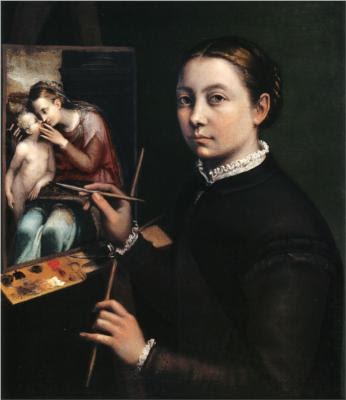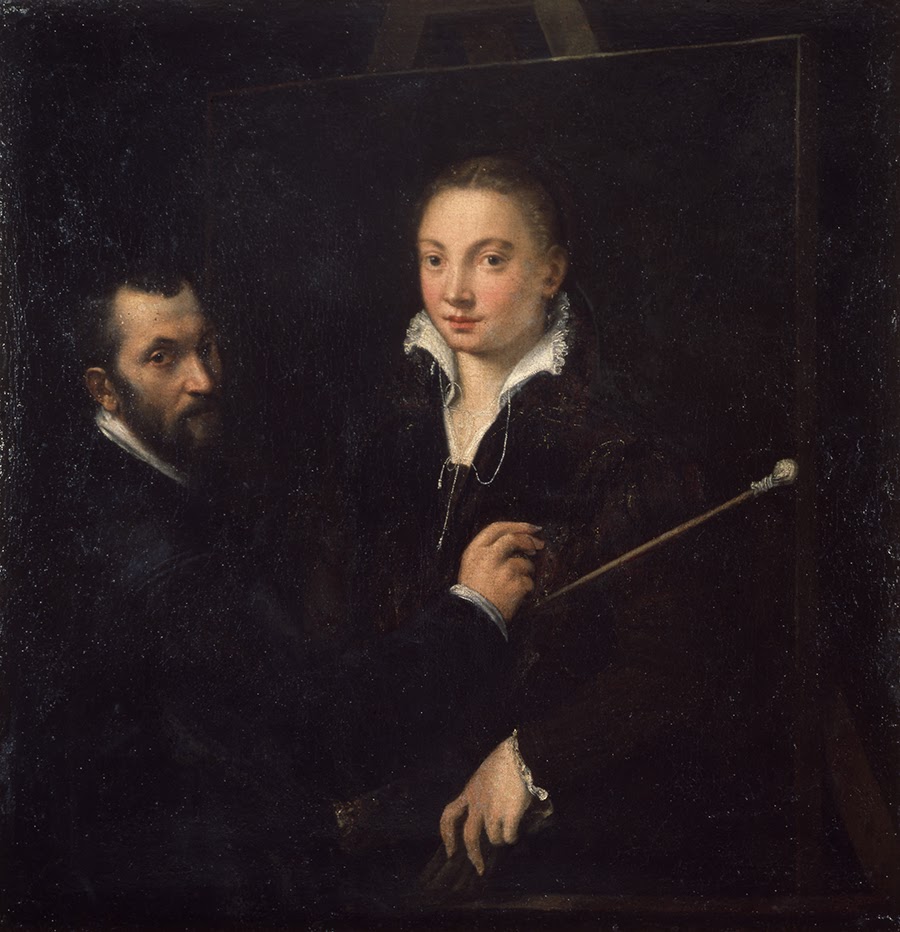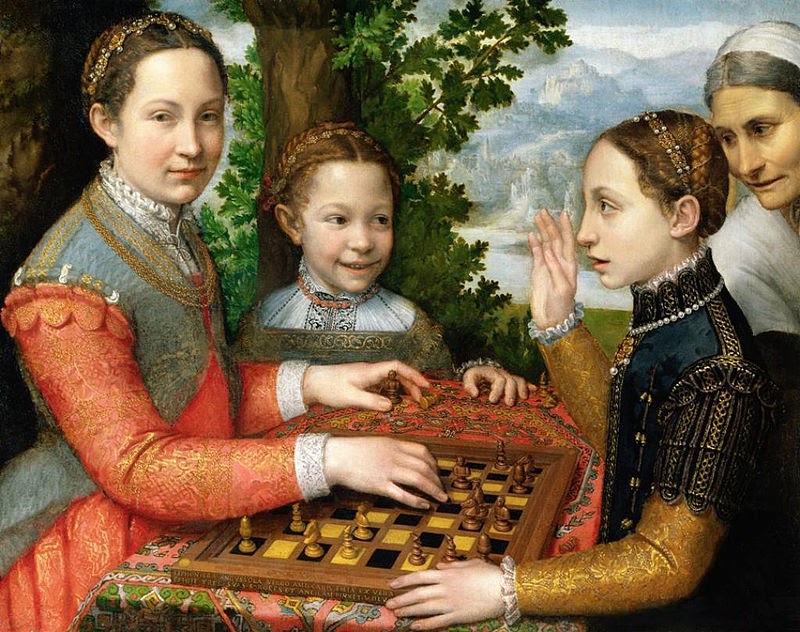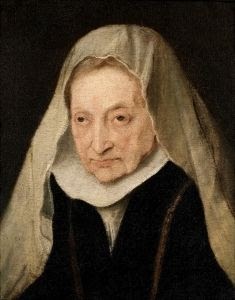
Sofonisba Anguissola was one of the first female artists to gain international renown. She was sent by her father to train under artist Bernardino Campi and later Bernardino Gatti. All of her six siblings were talented and trained in the arts as well, though she showed the most promise. As a young girl, her artist celebrity crush was Correggio who her teacher, Gatti, also revered. Her father was also well-connected in the art industry, and secured her a letter from Michelangelo that contained a drawing. She sent a drawing of the drawing for appraisal in response and was met with encouragement from the great master.

Bernardino Campi Painting Sofonisba Anguissola by Sofonisba Anguissola, 1559.
Due to her gender, she specialized in portrait painting, and was recognized for her abilities by Giorgio Vasari for her ability to capture the moti dell’animo, or movements of the soul, alongside the physiognomy of the sitter. Art at this time was gendered and the production of high art was a male occupation. Vasari looked down upon portrait painters, who he believed lacked invenzione, criticising them for their lack of disegno, or design, in their compositions due to the mimetic nature of portrait painting. Anguissola was an exception. Her figures were dynamic rather than static, and in their movements lay the so-called moti dell’animo which Vasari dubs her genius. He credited this to her ovaries, stating in his tell-all compilation of artist biographies, "Le Vite," “If women know so well how to make living men, what marvel is it those who wish are also so well able to make them in painting?” Yikes.
Women received the “design” of the man, the principle genitor in all creative endeavors, both in the creation of children and as an artist copying his likeness. He stated that the best works of female artists were those derived from others works rather than their own. Women were particularly suited for portrait painting due to their reproductive facilities which he thought translated from the anatomy to the canvas. However, Anguissola defied the box he put female artists in as her portraits were not merely mimetic representation of the subject, but revealing studies into the interiority and personality of the sitter. She had the invenzione chops required to create the grand pieces conveying religious or historical subject matter that attracted large commissions, but due to her status as a woman, was barred from studying anatomy and life drawing alongside her male counterparts and therefore unable to create them.

The Chess Game by Sofonisba Anguissola, 1555.
Born to a noble but poor family, art was her hustle, allowing her to support her family after her father’s death. She was invited to be a court painter in Madrid by King Philip II of Spain in 1559 where she also was an attendant to the infanta and a lady-in-waiting to the queen. In the Spanish court, she was a favorite of the king, who even arranged a marriage for her to a Sicilian, Fabrizio de Moncada, in 1571 and provided the dowry. Even after leaving the court post-nuptials, she maintained a connection with the Spanish court, receiving a royal pension which allowed her to continue painting and work as a tutor to future painters. Her marriage to de Moncada ended in 1579 with his death, and she remarried sea merchant Orazio Lomellino in Pisa and moved to Genoa.

Portrait of Sofonisba aged 92 by Anthony Van Dyck, 1624.
With Lomellino’s fortune plus the pension from Phillip, she was able to paint freely and during her later years she painted religious themes alongside the portraits for which she was known. In Genoa, she was a leading portrait painter until she moved to Palermo, where she spent the rest of her life. Her eyesight began to decline and she painted her last self-portrait in 1620, but her influence ceased to wane as she became a patron of the arts. She was also visited by young Flemish painter, Anthony van Dyck, who claimed that the visit taught him more about the true principles of painting than anything else in his life.
She died at the ripe old age of 93 in Palermo survived by her adoring husband who placed an inscription on her tomb reading, “To Sofonisba, my wife, who is recorded among the illustrious women of the world, outstanding in portraying the images of man. Orazio Lomellino, in sorrow for the loss of his great love, in 1632, dedicated this little tribute to such a great woman.”
Sources
- De Girolami Cheney, Liana. The Sixteenth Century Journal 24, no. 4 (1993): 942-47. Accessed January 18, 2020. doi:10.2307/2541628.
- Jacobs, Frederika H. "Woman's Capacity to Create: The Unusual Case of Sofonisba Anguissola." Renaissance Quarterly 47, no. 1 (1994): 74-101. doi:10.2307/2863112.
- Kuiper, Kathleen. “Sofonisba Anguissola.” Encyclopaedia Britannica. October 28, 2019. https://www.britannica.com/biography/Sofonisba-Anguissola
- “Sofonisba Anguissola.” Khan Academy. Accessed January 18, 2020. https://www.khanacademy.org/humanities/renaissance-reformation/high-ren….
- “Sofonisba Anguissola.” Sotheby’s. Accessed January 18, 2020. https://www.sothebys.com/en/artists/sofonisba-anguissola.









